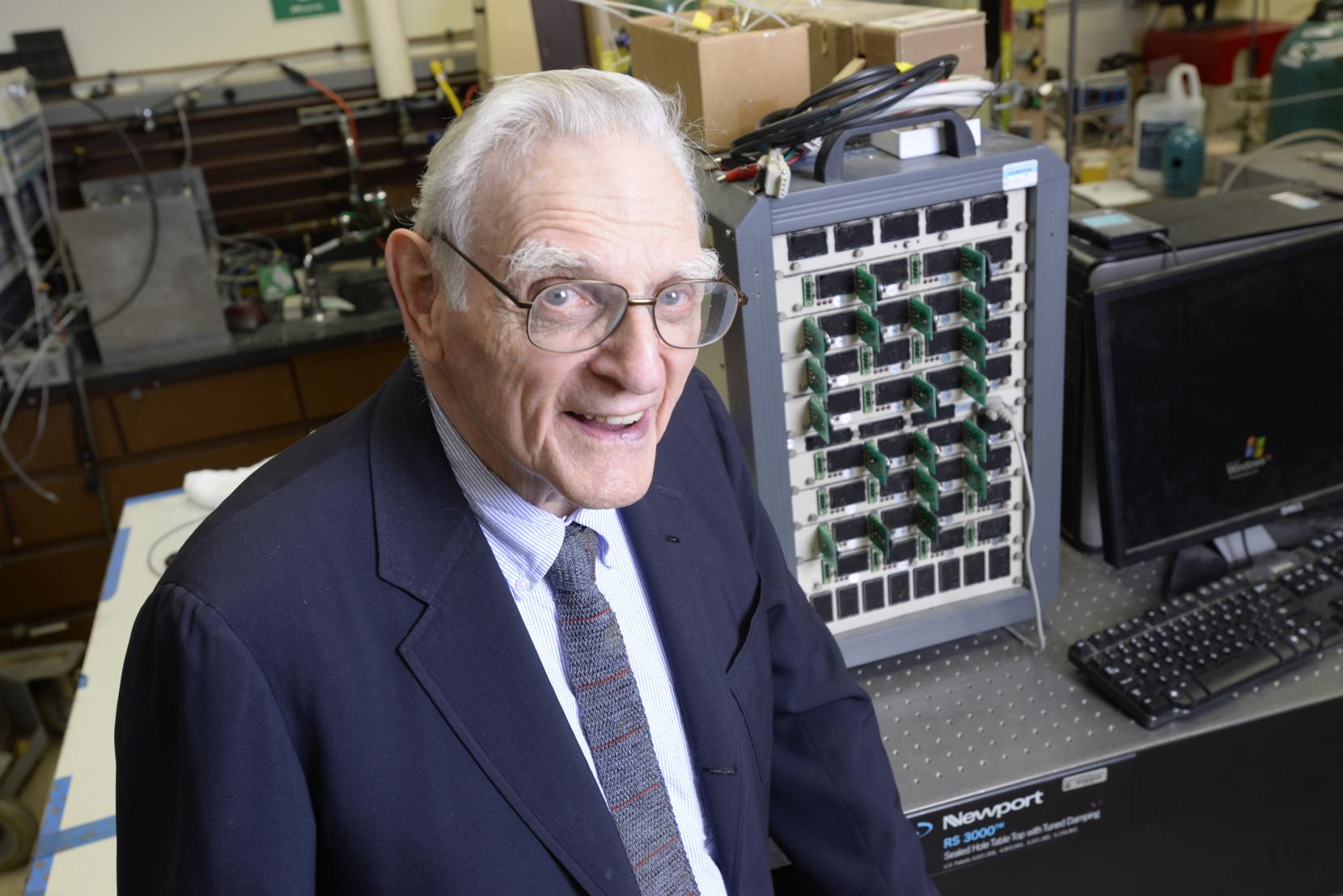Co-inventor of the lithium-ion battery and professor in the Cockrell School of Engineering at The University of Texas at Austin, John Goodenough, led a team of engineers to develop the first all-solid-state battery cells. These cells will lead to safer, faster-charging, longer-lasting rechargeable batteries for mobile devices, electric cars, and energy storage.

Professor John Goodenough. Image source: University of Texas at Austin.
The 94-year-old inventor’s latest breakthrough is a low-cost all-solid-state battery that’s noncombustible and has a long cycle life with a high volumetric energy density and speedy rates of charge and discharge.
According to the team of engineers, who described the new technology in a recent paper published in the journal Energy & Environmental Science, cost, safety, energy density, rates of charge and discharge, and cycle life are critical for battery-driven cars to be more widely adopted.
“We believe our discovery solves many of the problems that are inherent in today’s batteries,” Goodenough told the journal.
With the new battery cells able to supply at least three times as much energy density as today’s lithium-ion batteries, this technology is a game-changer. Because a battery cell’s energy density gives an electric vehicle its driving range, this means that a higher energy density can allow a car to drive more miles between charges. The UT Austin battery formulation also allows for a greater number of charging and discharging cycles, which equates to longer-lasting batteries and a faster rate of recharge.
“Solid-state batteries not only can enable electric cars with a longer driving range, but also safer smartphones and laptops, because the flammable electrolyte is replaced with a solid material,” technology analyst for IDTechEx, Dr. Lorenzo Grande, told Electronic Products. “There are a few caveats, however, like the fact that lithium metal anodes are very reactive (even more so in the case of sodium metal), and the possibility for sulphide-based solid electrolytes to release H2 S, a gas that is toxic even in small amounts (if inhaled).”
Today’s lithium-ion batteries use liquid electrolytes in order to transport the lithium ions between the anode (the negative side) and the cathode (the positive side). If a battery cell is charged too quickly, it can cause dendrites to form and cross through the liquid electrolytes. This causes a short circuit that can lead to explosions and fires. Instead of liquid electrolytes, the researchers relied on glass electrolytes to enable the use of an alkali-metal anode without the formation of dendrites.
The use of an alkali-metal anode (such as lithium, sodium, or potassium) increases the energy density of a cathode and delivers a long cycle life. In experiments, the research team’s cells demonstrated more than 1,200 cycles with low cell resistance.
Impressively, this type of battery in a car can perform well in subzero-degree weather because the solid-glass electrolytes can operate, or have high conductivity, at 20°C. The engineers’ glass electrolytes also allow them to plate and strip alkali metals on both the cathode and the anode side without dendrites, which simplifies battery cell fabrication.
Another major advantage to the new battery is that its cells can be made from Earth-friendly materials.
Currently, Goodenough and his team are continuing to advance their battery-related research and are working on several patents.
Source: The University of Texas at Austin, Energy & Environmental Science
Advertisement
Learn more about Electronic Products Magazine





